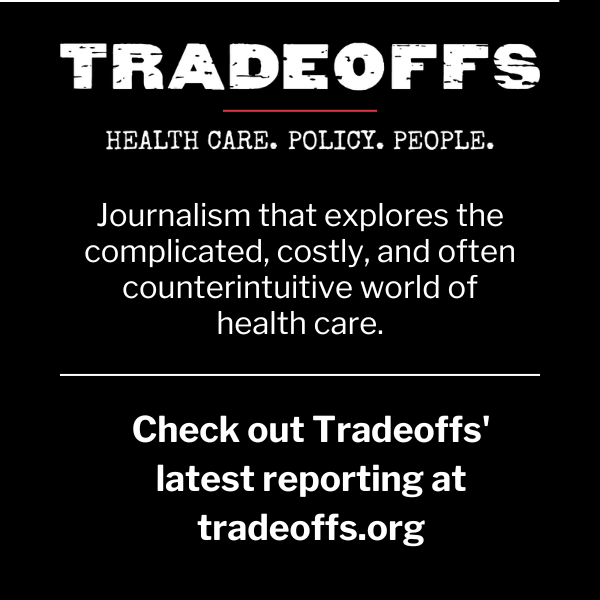Even before the extreme weather of this summer, health care systems had become increasingly aware that climate change endangers human health. And that the burden disproportionately falls on the elderly, the sick, the poor and communities of color.
What’s less well-known is that the health system itself contributes significantly to climate change. In fact, the U.S. health care system contributes about 8.5% of the nation’s greenhouse gas emissions — roughly twice as much as health systems in other industrialized countries.
Some hospitals are beginning to address their role in climate change. Others, not so much. And it’s been underreported. There’s plenty you can — and should — write about at the state, federal and local levels. (Here’s the story I wrote for Politico Magazine on the greening of hospitals.)
This tip sheet lays out some of the main areas that “green-minded” hospitals are working on and describes some of the challenges ahead. It also lists some — though by no means all — of the health care groups working on the environment and suggests some starting points for your reporting. I’ve been covering health for a long time, so it’s rare that I come across a topic like this that’s brand new to me.
One thing to recognize — and I learned this early in my reporting — is that resilience and sustainability are not synonyms. Resilience means surviving extreme weather like a hurricane, flood or other event that could knock out electricity or create unsafe conditions if a system isn’t prepared. Sustainability is addressing the underlying practices that contribute to climate change. Sometimes tools for resilience, like diesel generators for example, are not actually part of the sustainability toolkit.
A pledge with some punch
The Biden administration has created a voluntary climate pledge for the health sector. Unlike many “voluntary” pledges, this one has some teeth. Health systems that sign on commit to very specific and ambitious goals and report on their progress. Many hospitals that have begun this work say the transparency and accountability around the pledge makes it a catalyst for action.
Action can take many forms. Some of it is what you’d see in other industries. Hospitals are switching to electric vehicles, overhauling HVAC systems, and switching to renewable energy like wind and solar. Some are landscaping with local and native plants that require less water.
Health systems serve many, many meals on any given day to patients, staff and visitors. A lot goes to waste. Hospitals are composting, reducing reliance on paper and plastic, and serving more plant-based meals. Some are starting gardens on or near their property or even on their rooftops.
Other steps are unique to the health sector.
Certain anesthetic gasses, for instance, turn out to be climate unfriendly. One widely used agent, called desflurane, remains in the atmosphere for a decade or more. But it can be safely swapped out for a more planet protective gas that’s just as safe for patients, and often cheaper.
Nitrous oxide, aka “laughing gas,” is even worse; it can stay in the environment for up to 114 years (some studies suggest even longer). It’s delivered to operating rooms through a system of pipes similar to those used for oxygen. Those pipes leak — a lot. Up to 80% of the gas escapes. Some hospitals are decommissioning those pipes and going back to tanks and canisters. The American Society of Anesthesiology has endorsed such changes and UC San Francisco has been a leader here.
One of the biggest challenges is the supply chain. So many items in hospitals are used once and discarded. Actually, some of them are discarded even if they weren’t used. Just unwrapping them can mean they’re headed to a landfill or an incinerator. Re-inventing the supply chain is a big challenge. Some items can be reprocessed, recycled or sterilized. But many items currently on the market are designed to be disposable. And that’s not always because of infection control. Disposable goods are also good business. Clients have to keep coming back for more.
The Biden administration hopes to nudge the supply chain in a different direction. That’s one goal of the climate pledge: to create a community of health care providers big enough to start using their collective clout to demand market changes (there are a few examples in my story). Little changes add up. For instance, the Providence hospital chain replaced those ubiquitous sharps boxes, which are thrown out when full, with alternatives that can be used 600 times.
Tons of stories in your community
Most of these stories haven’t been told before. So consider:
- Does your local hospital or health system have a sustainability officer? What’s their brief? What’s their background? If they are on the engineering/physical plant side, who are they working with on the clinical side?
- Are medical students and nursing students agitating for change from the bottom up?
- What role are nurses playing?
- Are older physicians who may be more set in their ways beginning to champion change as they see that climate change is no longer an abstraction but something that’s already harming their patients and communities (think heat domes, poor air quality, fires, power outages, floods, new or re-emerging disease vectors)?
Ask your local hospitals what they’re doing and why. Find out what they’re not doing and the reasons.
Resources
Here are some resources to get you started with the background; more and more organizations are getting involved every day.
- Practice Greenhealth and Health Care Without Harm
- HHS Health Sector Pledge
- HHS Office of Climate Change and Health Equity
- Centre for Sustainable Health Care (UK)
- National Academy of Medicine: Action Collaborative on Decarbonizing the U.S. Health Sector.
- The Joint Commission (convening a Decarbonization Technical Advisory Panel)
- The University of Minnesota has a big focus on Nursing and Climate.
- Medical Students for a Sustainable Future.








